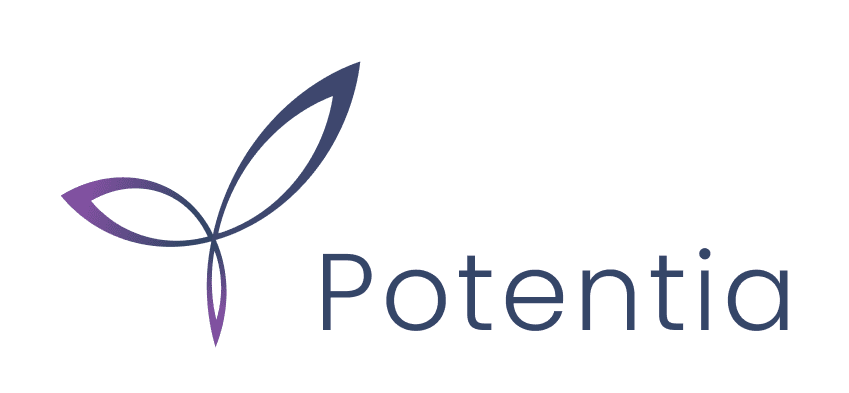Tanja had the honor of being featured in the cover story of People Talk Magazine. Check out the article here:
Mental Health: A Work in Workplace Progress
Of Stigmas and Taboos
In spite of great strides made in recent years to recognize and remove the stigma from mental health problems, this scenario and others like it still too often hold true.
Yes, talking about mental health or illness is still often taboo, says Tanja Halsall, CPHR, director of people and culture at the Canadian Mental Health Association in Kelowna. It depends on the workplace and is influenced by the culture of the organization. It goes back to knowledge. People don’t know what to do about mental health and those who have mental health problems don’t like to be vulnerable.
It continues to be a challenge for many organizations, Halsall adds.
Need for Open Conversation (and Minds)
We still have a long way to go, but we’ve seen a dramatic improvement in attitudes toward mental health issues, in the workplace and elsewhere, since 2007 when the Great-West Life Centre for Mental Health in the Workplace was launched, says Mary Ann Baynton, program director at the Centre. We’ve made considerable progress in building awareness of workplace mental health and reducing the stigma around talking openly about this subject.
Research shows that about 25 per cent of Canadian employers are actively addressing psychological health and safety, another 50 per cent are taking some steps to improve workplace mental health, and about 25 per cent don’t have it on their radar yet, Baynton says.
People are talking more about mental health in workplaces, she continues. The discussion is not just focused on employees with diagnosed mental health conditions and what to do if they’re unable to cope. It’s also about how to create healthy workplaces that help reduce stressors that can contribute to mental health issues and to support and accommodate employees who are living with mental health challenges.
Michelle Tremblay, founder of MPower Lives, a Port Coquitlam-based coaching and educational business, isn’t so sure. Although she works with progressive organizations that recognize the importance of mental health to their employees and their organizations, she says, We’re only really beginning to understand the effects of mental health in the workplace.
Canada is Leading the World
While recognition may be slow in some organizations or sectors, Canada is recognized as a world leader in supporting mental health in the workplace, Baynton says. The Mental Health Commission of Canada (MHCC) launched the National Standard of Canada for Psychological Health and Safety in the Workplace (the Standard) in 2013.
Through a three-year MHCC case study, approximately 40 organizations worked to implement the Standard. The finding that most impressed me was that every single organization reported an improvement in every single psychosocial factor named in the Standard, Baynton explains. This means that it worked.
What we know is that it worked differently for every organization. Some found a significant cost-saving, others found their greatest benefit was improvement in employee engagement and satisfaction, while still others found that they increased their employees overall mental health awareness, says Baynton. The point is that because each organization was able to customize the framework provided by the Standard to address their own needs and objectives, they were able to impact that areas that mattered most to them.
B.C. also passed Bill 14, anti-bullying legislation, in 2012.
Recognizing Mental Health Issues in the Workplace
Just as a puddle in your yard may or may not have originated in your property, mental health issues can’t be easily divided into at-work and at-home. The effects of problems in one place manifest in the other.
Personal issues, physical health issues, a troubling home life, financial or marriage problems, trauma, dealing with addictions these are just a few of the potential causes behind mental health issues, Tremblay explains. Additional workplace causes may include egotistical leadership, positional power and gender-dominated environments.
However, regardless of where the problems begin, the effects can manifest at work and at home. They may affect an employee’s performance, including causing him or her to be less able to be flexible or cope with change, says Baynton. They may make it more difficult to learn new tasks or, on the flip side, the person could actually become singularly-focused on taking on more responsibility. Employees experiencing mental illness may be more withdrawn or they may be more confrontational.
In other words, there’s no definitive pattern because mental illness is layered on top of personality, skill level and existing work relationships. What you really want to look for is a change from whatever is normal for those employees when they are well, Baynton maintains. A mental health issue is anything that interferes with our ability to do our best work. This can range from uncertainty and fear to a diagnosis of a mental health issue.
Mental Health Impacts Further Afield
For organizations with employees working outside of offices in potentially dangerous situations, one of the other indicators of mental health issues can be increased workplace injuries, according to Jody Drope, CPHR, vice president of HR and environment, health and safety at FortisBC.
We see it a lot in slips and trips, Drope says. When the nature of the injury is not related to lack of procedural or protocol knowledge, but to a momentary lack of focus, then mental wellbeing could be at play.
Something like a muscle sprain is avoidable if you take time to assess the risks and take precautions, but mental illness can diminish a person’s ability to process complex options, explains Drope. Or when you’re distracted, you may not find the most appropriate way to approach a workspace matter, or feedback is received differently as a result of mental wellbeing and the chatter a person may have going on in their head.
Add in tasks like welding or operating excavators or other heavy equipment and the potential for injuries increases exponentially when an employee’s cognitive ability is diminished by mental illness.
A Multi-faceted Approach to Whole Health
When I worked at the City of Kelowna in the early 2000s, one of the areas I was responsible for was claims management in our Return to Work (RTW) program, Drope says. We looked at the cognitive disability underlying physical injuries. If someone broke their foot, the treatment of the bone was the primary concern. Treating the mental or cognitive disability was secondary, if the need for it was recognized at all.
The longest and most difficult claims to transition back to work were those with an underlying cognitive disability, often as a result of a mental health issue, Drope adds. General practitioners aren’t qualified in many instances to diagnose or treat a cognitive disability, nor do they have the time or expertise to do so. The employee needs to see a specialist, but often the cognitive disability ends up not being treated.
When the City contracted a rehabilitation firm that bundled physical and cognitive rehabilitation through a registered clinical psychologist the difference was staggering, Drope says. Our average length of claim went down from 60 days to 10. There was a huge enough disparity that you couldn’t ignore it. It completely changed the game. Employees felt supported and got the treatment they needed.
Drope adds that the employer and unions worked together to expedite treatment for employees who needed it.
Creating Psychologically Healthy Workplaces
That feeling of support is crucial to a psychologically healthy workplace. One of the most impactful aspects of addressing mental health work is for the employer to be deliberate and have a workplace plan in place, one that involves employees in the process as well as the execution, says Halsall.
While organizations can conduct formal surveys to measure attitudes and how safe employees feel at work, Halsall explains, Less formally, we see a lot of success when organizations focus on relationships, togetherness, inclusiveness and celebrating success as a larger team. One of the most impactful results that we see is that employees feel that their employer cares about them.
Activities that can promote a psychologically healthy workplace vary widely, but can include health and wellness committees, social committees that organize activities both within and outside work hours, education and workshops, retreats, town hall meetings, physical wellness activities or working together to give back to their larger community. Small things can have a big impact.
You’d be surprised at how impactful a small thing like encouraging people to take a break and eat lunch together can be, Halsall says.
Tremblay agrees. To be healthy, the workplace needs to be an environment with a culture of respect and both physical and emotional safety. Employees must feel safe to talk about things they are dealing with.
Far-reaching Effects Help Bottom Line Too
The difference can be significant. Research is showing that even among employees with diagnosed depression, absenteeism is reduced by more than one-third in workplaces that support mental health. Just think about reducing your absenteeism cost by one-third. It can be a substantial cost saving, says Baynton.
The point is that many people can live and work effectively with a mental illness such as depression or anxiety, in the right environments.
Employees who experience workplaces that are high-demand, low-control, high-effort and low-reward, are more likely to suffer adverse consequences of a psychologically unsafe workplace, Baynton says. The costs of these consequences can be staggering, both for individuals (by affecting overall wellness) and the organization (by decreasing business competitiveness).
Mental illness impacts the bottom line for organizations in many ways, Drope adds, including both absenteeism and presenteeism, reduced productivity and staff turnover, as well as the aforementioned higher injury rates and slower returns to work.
Halsall sums it up as, Healthy people in healthy environments produce healthy results.
When an organization is creating a psychologically healthy workplace with a supportive culture where people care about each other, where there’s a greater sense of purpose, and people feel part of a larger team, people are more engaged, says Halsall. Engaged people produce more. They get ideas. They get results. Ultimately they encourage others to do the same. Engaged people lead the way and are invaluable for creating a healthy workplace and a healthy bottom line.
Mental Health: For Better or Worse
Whether mental health issues at work are worsening or simply receiving more attention in the current social climate is a question that is hard to answer with any certainty, given the reluctance to talk openly about mental illness at work. It could be that we are only now becoming aware of the extent of the problem as more people open up about it.
However, HR professionals do identify increased demands that can negatively affect mental health.
Society is very complex, Drope notes. For more and more people, they need to move to urban environments that are getting denser to lower infrastructure costs, which brings lots of challenges from a mental health perspective. The daily commutes, the close proximity to others ”I don’t know that homo sapiens were meant to be living in the density we live in.
Multi-tasking and electronic devices can be negative influences, too. People are constantly bombarded with information and their minds never have a chance to rest. It doesn’t lead to quality of thought. I would say that people’s ability to focus is compromised more now as a result, Drope says, adding that multi-tasking is not all that effective. And when you have work that requires uninterrupted thought to reach a logical solution or conclusion, that is compromised.
HR Key to Workplace Mental Health
So, while it’s clear that mental health, or the lack of it, can have a huge impact on the workplace, what can HR do about it?
If nobody on staff has the right training, they can access external resources, such as the Canadian Mental Health Association or firms like Tremblay’s MPower Lives, which offer short or extended workshops, lunch-and-learns and more to help employees learn more about mental health in the workplace and to remove the fear around the discussion.
There are many resources for education about the topic, but supporting specific individuals can involve walking a fine line. Your mind is largely a personal space, and the employer has no right to go there unless your illness manifests itself in the workplace and impacts it, Drope notes. You have to delicately offer support.
That grey area is why it’s so important to educate the people in management roles about how to recognize symptoms and offer support, she adds.
Something that I’ve found always works is showing you’re comfortable with being vulnerable first ”then other people are more likely to feel it’s okay to do that, says Drope. If you have solid relationships in good times, that is the foundation for sensitive conversations. If you don’t invest in building those relationships, people don’t fee safe.
Besides supporting an Employee and Family Assistance Program that offers counselling and enabling leadership at all levels to recognize mental health issues and respond appropriately, HR can also be a one-step-removed resource where individuals can take sensitive matters for counsel and support when there’s a personal difference between them and their immediate leaders.
A Strategy of Mental Health
Mental health initiatives should be woven into strategic initiatives, adds Baynton, not set up as separate programs. Whenever an organization considers new or revised policies, procedures, programs or interactions, HR can take the leading in asking, How might this impact psychological health and safety?
HR can be the leader in creating the safe environment and inclusive, open and supportive cultures needed to address mental illness in the workplace, Tremblay says. Employers need to recognize that each individual needs a respectful, positive and encouraging environment to thrive and that people need to feel safe. That’s the bottom line in mental health.
HR can set the direction and tone of how we treat our people, adds Halsall. It’s critical to have a coaching culture and to work with people to make sure everyone has a voice. When you have a plan in place to create a healthy environment, you see great results.
It’s amazing what happens when employees feel their organization cares about them as people first and employees second.
Source: https://peopletalkonline.ca/mental-health-a-work-in-workplace-progress/





